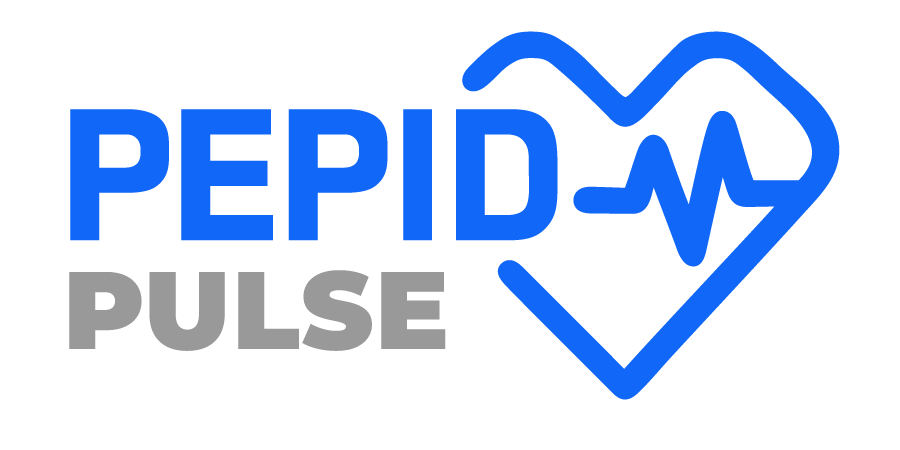The Importance of Teamwork in the Emergency Room
The emergency room (ER) is a fast-paced and high-stress environment where every second counts. Patients who arrive at the ER may be suffering from a wide range of conditions, some of which can be life-threatening. Emergency departments in the U.S. had 131.1 million visits in 2020. In such an environment, the ER team must be able to work together and communicate seamlessly to provide prompt and effective care to each patient. Additionally, teamwork can improve patient satisfaction, as patients tend to feel more comfortable and secure when they see different healthcare professionals working together to take care of them.
Teamwork and Communication in the Emergency Room
Healthcare professionals in the ER, including doctors, nurses, and support staff, must work together efficiently and effectively to assess patients, make diagnoses, and develop treatment plans. This results in faster treatment and better patient outcomes, particularly in critical situations like cardiac arrest.”
The emergency room is a high-stress environment. Teamwork and communication are critical components of providing high-quality care in the ER.
One of the most important aspects of teamwork in the ER is communication. Clear and accurate communication among team members is crucial to preventing errors, improving patient safety, and providing efficient care. In the ER, communication can involve everything from exchanging information about a patient’s medical history to coordinating the administration of medications and other treatments.
Effective communication requires not only speaking clearly and listening attentively but also understanding the roles and responsibilities of other team members. In the ER, healthcare professionals must work together to ensure that patients receive the best possible care. This may involve delegating tasks and responsibilities based on each team member’s skills and expertise, as well as sharing information and insights gained to develop the most effective treatment plans for each situation.
Strategies for Building & Maintaining a Strong ER Team
Hot Debriefing
One study examined the method of “hot debriefing,” meant to occur in the immediate moments following a clinical event.
Hot Debriefing is a communication procedure that occurs between members of a team after a clinical case. It allows for the examination of individual and team performance and reveals areas of excellence as well as possible faults which aids in the development of programs to improve future performance. While the American Heart Association and UK Resuscitation Council both advocate debriefing after every cardiac arrest attended by a healthcare practitioner, it has yet to become standard practice. This is due in part to time constraints and workload in the emergency department (ED).
When hot debriefing was used, the study found this was a favorable tool among practitioners. These practices not only enhance communication but also promote collaboration and foster trust among team members.
Invest in Training & Education
Another important strategy is to invest in training and education to ensure that all team members have the necessary skills to provide the best care possible. This involves regular in-service training on specific topics such as new treatment guidelines, equipment use, or simulations of critical events to ensure that everyone is proficient in their respective roles. Moreover, it is crucial to establish a culture of continuous learning, where team members can share their experiences and learn from each other.
Make it Clear
Additionally, effective teamwork requires the establishment of clear roles and responsibilities for each team member. This involves outlining the scope of practice for each role and ensuring that everyone understands their roles and responsibilities. Furthermore, team leaders must provide support and guidance to team members, especially those who are new or less experienced, to ensure that they can provide the highest level of care.
Acknowledge & Support
Lastly, it is important to recognize and celebrate the successes of the team. Acknowledging achievements, providing feedback, and recognizing contributions can help foster a positive and supportive work environment, which enhances team morale and motivation.
Barriers to Unity in the Emergency Department
Despite the numerous benefits of teamwork in the ER, there are still many challenges that teams may face. One of the biggest challenges is a lack of clear roles and responsibilities. In a high-stress environment like the ER, it can be easy for team members to assume that someone else is taking care of a task or responsibility, leading to confusion and mistakes. To address this challenge, it is important for ER teams to establish clear roles and responsibilities for each team member and to communicate these roles effectively.
However, effective communication can also be a challenge, and can lead to errors, delays in treatment, and poor patient outcomes. To overcome this challenge, teams can implement strategies such as standardized communication protocols, regular team meetings, and training in communication skills.
In addition, ER teams may face challenges related to staffing shortages, high patient volumes, and limited resources. Nursing shortages have been a critical challenge since the start of the COVID-19 pandemic in emergency departments. These challenges can lead to burnout, stress, and decreased job satisfaction among team members.
Building and maintaining a strong ER team requires ongoing effort and dedication. By recognizing and addressing the challenges that teams may face, and implementing effective communication and teamwork strategies, ER teams can provide high-quality care and improve patient outcomes. ER teams need to prioritize self-care, take breaks when needed, and have support systems in place as they strive to maintain successful teamwork.
Building and maintaining a strong ER team requires intentional efforts from all members of the team. One of the essential strategies is to establish clear communication channels to ensure that every member of the team is aware of the current situation, patient status, and treatment plans. This can be achieved through daily huddles, regular meetings, and debriefings after critical events to review what worked and what needs improvement.
Promoting hot debriefing in an emergency department
National Library of Medicine
Positive Outcomes for All
Teamwork in the emergency department is crucial for providing prompt and effective patient care, improving patient outcomes, and increasing patient satisfaction, and improving patient outcomes
One study states that:
“Building a resilient team inclusive of strong leadership and communication skills is essential to being able to withstand the challenging demands of the ED.”
Strong teams set expectations for team members, encourage open communication, engage in ongoing training & education, work well together, and strive to create a positive team culture. A strong team leads to improved productivity, better job satisfaction, and increased job performance.
Building and maintaining a strong ER team requires ongoing efforts such as effective leadership, regular team training, and the use of communication tools and protocols. While challenges to teamwork and communication in the ER do exist, implementing effective strategies can help overcome these challenges. Ultimately, by prioritizing teamwork and communication in the ER, healthcare providers can ensure that patients receive the best possible care and that our healthcare system operates at its highest potential. Let us all commit to improving teamwork in our practice and take action to create a culture of collaboration and excellence in healthcare.
References
American College of Emergency Physicians. (2021, December 15). Nursing shortages compound capacity concerns, strain emergency departments amid COVID surge. Retrieved January 27, 2023, from https://www.emergencyphysicians.org/press-releases/2021/12-15-21-nursing-shortages-compound-capacity-concerns-strain-emergency-departments-amid-covid-surge
American Heart Association. (2021). Cardiac Arrest. Retrieved from https://www.heart.org/en/health-topics/cardiac-arrest
Broom, A., & Bowers, B. (2017). Interprofessional teamwork in the emergency department: A review. Journal of Interprofessional Care, 31(3), 276-282. https://doi.org/10.1080/13561820.2017.1308957
Center for Disease Control and Prevention (CDC). (2020). National Hospital Ambulatory Medical Care Survey (NHAMCS): Emergency Department Data. Retrieved from https://www.cdc.gov/nchs/data/nhamcs/web_tables/2020-nhamcs-ed-web-tables-508.pdf
Gilmartin S, Martin L, Kenny S, Callanan I, Salter N. Promoting hot debriefing in an emergency department. BMJ Open Qual. 2020 Aug;9(3):e000913. doi: 10.1136/bmjoq-2020-000913. PMID: 32816864; PMCID: PMC7430325.
Hinshaw, M. J., O’Daniel, R. T., & Wolf, L. J. (2010). The Impact of Teamwork and Communication on Patient Outcomes. Journal of Healthcare Quality, 32(2), 45-53.
Schreiber, M. J., West, M. S., & Kowalski, J. S. (2008). Teamwork in the Emergency Department: A Review. Journal of Emergency Nursing, 34(5), 477-481. https://doi.org/10.1016/j.jen.2008.01.007
Sittig, D. F., Singh, L. S., Kaissi, J. K., & Sittig, M. A. (2010). Teamwork and Patient Safety in the Emergency Department. Journal of Patient Safety, 6(2), 61-67.
Wears, E. M., & Cronenwett, L. J. (2011). Teamwork and communication in emergency care: a review of the literature. Journal of Patient Safety, 7(4), 222-233. https://doi.org/10.1097/PTS.0b013e318230b503




